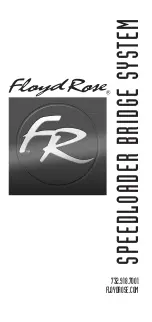
Setting the Personal Electronic Piano MIDI Channels
1. Press and hold the MIDI/TRANSPOSE button.
2. Press the key on the keyboard corresponding to the desired
MIDI transmit or receive channel.*
3. Release the MIDI/TRANSPOSE button.
*
Keys C
1
through D#
2
on the keyboard are used to set the MIDI
transmit channel, and keys C
3
through D#
4
are used to turn the
OMNI mode OFF and set the MIDI receive channel as shown in
the illustration below. The E
4
key sets the OMNI receive mode
and basic receive channel 1
.
Note:
When the power is initially turned ON, MIDI receive is set
to the OMNI mode and the transmit channel is set to 1.
MIDI FUNCTION CHART
Function Voice Selector*
Local ON/OFF PIANO
Program Change ON/OFF E.PIANO
Control Change ON/OFF
Multi-Timbre Mode
Split & Left Local OFF
Split & Right Local OFF
HARPSI
VIBES
STRINGS
BRASS
Panel Data Transmit P.ORGAN
l
The MIDI functions listed above are engaged by holding down the
MIDI/TRANSPOSE button and pressing the corresponding voice
selector. Full details are given in the following pages.
Local Control ON/OFF
“Local Control” refers to the fact that, normally, the Personal
Electronic Piano keyboard controls its internal tone generator,
allowing the internal voices to be played directly from the key-
board. This situation is “Local Control ON” since the internal
tone generator is controlled locally by its own keyboard.
Local control can be turned OFF, however, so that the Personal
Electronic Piano keyboard does not play the internal voices,
but the appropriate MIDI information is still transmitted via
the MIDI OUT connector when notes are played on the key-
board. At the same time, the internal tone generator responds
to MIDI information received via the MIDI IN connector. This
means that while an external MIDI sequence recorder such as
the Yamaha EMQ-1 Memory Box, for example, plays the Per-
sonal Electronic Piano’s internal voices, an external tone genera-
tor such as the EMT-l can be played from the Personal Elec-
tronic Piano keyboard.
Turning Local Control ON or OFF
1. Hold down the MIDI/TRANSPOSE button.
2. Press the PIANO voice selector. If the PIANO LED is lit
when the PIANO voice selector is pressed; you have turned
local control OFF. If the PIANO LED is not lit when the
PIANO voice selector is pressed, you have turned local con-
trol ON.
3. Release the MIDI/TRANSPOSE button.
Program Change ON/OFF
Normally the Personal Electronic Piano will respond to MIDI
program change numbers received from an external keyboard
or other MIDI device, causing the correspondingly numbered
Personal Electronic Piano voice to be selected. The Personal
Electronic Piano will normally also send a MIDI program change
number whenever one of its voices is selected, causing the cor-
respondingly numbered voice or program to be selected on the
external MIDI device if the device is set up to receive and res-
pond to MIDI program change numbers.
This function makes it possible to cancel program change number
reception and transmission so that voices can be selected on
the Personal Electronic Piano without affecting the external
MIDI device, and vice versa.
1. Hold down the MIDI/TRANSPOSE button.
2. Press the E.PIANO voice selector. If the E.PIANO LED is
lit when the E.PIANO voice selector is pressed, you have
turned program change reception/transmission OFF. If the
E.PIANO LED is not lit when the E.PIANO voice selector
is pressed, you have turned program change reception/trans-
mission ON.
3. Release the MIDI/TRANSPOSE button.
Control Change ON/OFF
Normally the Personal Electronic Piano will respond to MIDI
control change data received from an external MIDI device or
keyboard, causing the selected Personal Electronic Piano voice
to be affected by pedal and other “control” settings received
from the controlling device. The Personal Electronic Piano also
transmits MIDI control change information when either of its
pedals are operated.
This function makes it possible to cancel control change data
reception and transmission if you do not want the Personal
Electronic Piano voices to be affected by control change data
received from an external device or vice versa.
1. Hold down the MIDI/TRANSPOSE button.
2. Press the HARPSI voice selector. If the HARPSI LED is
lit when the HARPSI voice selector is pressed, you have
turned control change reception/transmission OFF. If the
HARPSI LED is not lit when the HARPSI voice selector is
pressed, you have turned control change reception/trans-
mission ON.
3. Release the MIDI/TRANSPOSE button.
11
Summary of Contents for YPP-50
Page 5: ...3 ...
Page 7: ...5 ...
Page 19: ...YAMAHA YAMAHA CORPORATlON P O Box 1 Hamamatsu Japan 909 VI27370 Printed in Japan ...





































